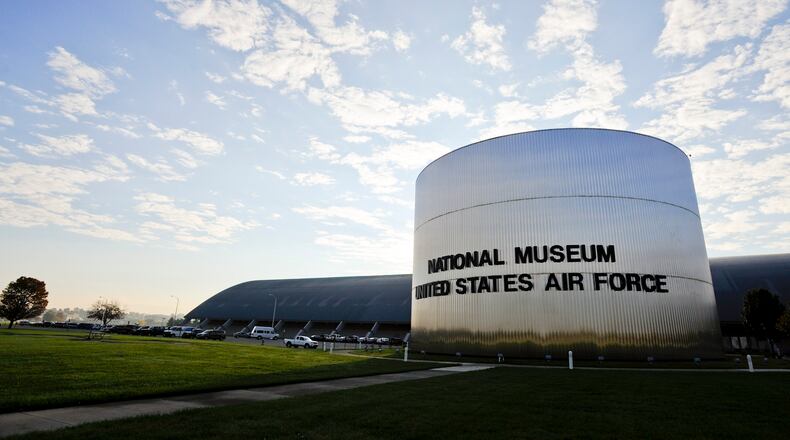Around the region, federal employees welcomed the chance to return to work, but some worried they may face a repeated scenario with a new budget deadline Jan. 15 and until the debt limit ceiling reaches a Feb 7 deadline.
“It’s a big concern because it happened once, it could happen again,” said Marshall Gray, a Social Security Administration claims processor in Springfield. “Nobody anticipated this recent shutdown going to the level it went to.”
“That’s a possibility and it does leave one frustrated,” said Superintendent Dean Alexander, leader of National Park Service sites in Dayton. He was one of 20 employees who returned to work Thursday after they were furloughed at the Huffman Prairie Flying Field at the Wright Memorial and the Wright-Dunbar Interpretive Center.
Some have lost faith Congress will avoid another shutdown in the next big round of budget negotiations.
“This is essentially going to be Groundhog Day because we’re going to see the very same thing in January,” said Rich Hanna, vice president of the American Federation of Government Employees Local 3448. The labor union represents 800 Social Security Administration workers in Ohio.
The reopening of the Air Force museum was welcome news to the tourism industry which relies heavily on the world’s oldest military aviation museum to bring more than 1 million visitors to the region every year. The shutdown turned away an estimated 40,000 visitors, led to eight military reunion cancellations, and postponed, canceled or moved 44 events, according to museum statistics. The museum has a $40 million annual economic impact.
“We still had our military reunion groups come in, but they were smaller than they would have been had they been able to get into the museum,” said Kathleen Young, executive director of the Greene County Convention and Visitors Bureau. “I guess when you think about it in that way, what was taken out in economic impact was probably pretty significant.”
Museum Director John “Jack” Hudson said in an interview Thursday he directed the popular tourist spot to reopen Monday, Oct. 7, but later guidance from high-level Air Force and Defense Department authorities ordered the museum closed until Congress approved a continuing funding resolution or final appropriations bill. The museum shutdown the next day for a second time since Oct. 1.
Hudson said civilian employees, 95 in total, were allowed to stay at work under the Pay Our Military Act while the museum was closed to the public. The legislation exempted civilian defense employees from emergency furloughs if they contributed to the “morale, well-being, capabilities and readiness of service members,” according to the Pentagon.
The employees worked to restore historic planes, planned future exhibits and upcoming events, among other duties, museum officials said. “We were able to do things here at the museum which actually helped us reopen quickly,” the retired Air Force lieutenant general said.
Plans for a full mock-up exhibit of a space shuttle and a ground-breaking late this year for a fourth aircraft gallery were on schedule, Hudson said.
Shutdown impact at Wright-Patterson
Buffeted by six days of unpaid furlough for 10,000 employees this summer caused from sequestration cuts, the shutdown had a second deep impact at Wright-Patterson. The base sent home for three and a half days on emergency furlough 8,700 civil service workers. Most were called back to work Oct. 7 under the Pay Our Military Act. Congress has since passed legislation to pay furloughed employees, also.
The absence of civilian employees temporarily suspended Air Force Institute of Technology classes, sent an untold number of intelligence analysts home assigned to the National Air and Space Intelligence Center, and delayed numerous contracts with defense contractors, military leaders said.
The Air Force Reserve 445th Airlift Wing, which flies the Boeing C-17 cargo jet, canceled eight local training missions, including six air refueling training missions, according to Lt. Col. Cynthia Harris, a unit spokeswoman. It also canceled one counter drug mission and two missions for Air Force Space Command and the Air Force Academy. A few flights to support wartime missions continued.
The unit’s more than 1,900 reservists will reschedule weekend reserve duty canceled this month, the lieutenant colonel said.
The Veterans Benefits Administration regional office in Cleveland had 130 employees return to work Thursday. They were furloughed Oct. 8. Mandatory overtime will resume to process claims, and the VA plans to make benefit payments to five million veterans, survivors and their families on the prior scheduled date of Nov. 1, VA spokeswoman Nicole Alberico said in an email.
Gray and many of his Social Security Administration co-workers were ordered to stay on the job as “excepted” employees, but they did not know if or when they would be paid, he said. To get by financially, Gray said he and his wife cut back on driving and eating at restaurants.
The shutdown restricted what activities federal employees could do while on the job. At the Social Security Administration, for example, workers could not process requests to replace Social Security cards or send benefit verification letters, creating a work backlog, Gray said.
At the National Weather Service in Wilmington, 23 meteorologists and technicians worked without pay, just as Social Security Administration employees did, but the office operated radar and weather instruments without interruption, said Kenneth Haydu, meteorologist in charge.
This shutdown was different than one in the 1990s, he remembered. Higher approval was needed this time, for instance, to spend money on mundane functions such as buying gasoline.
“It was much more complicated and you need much more permission to do the functions of your job,” he said.
About the Author
